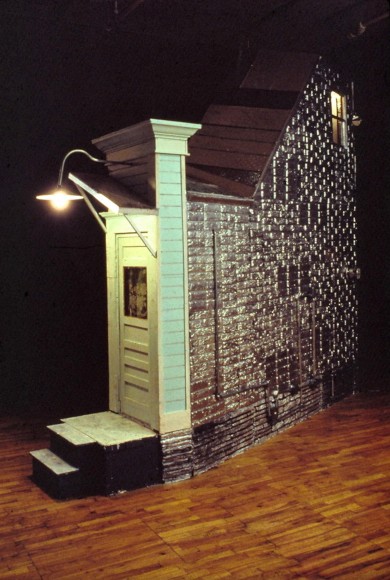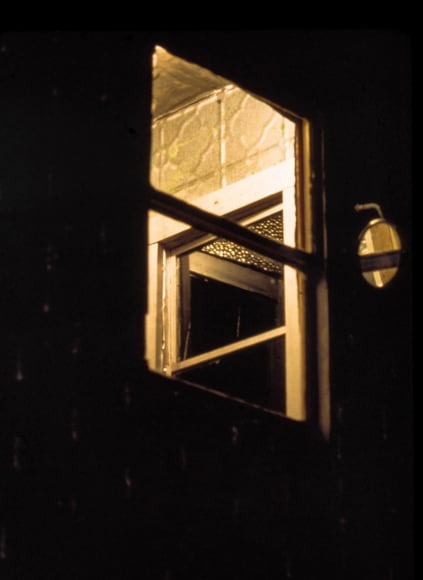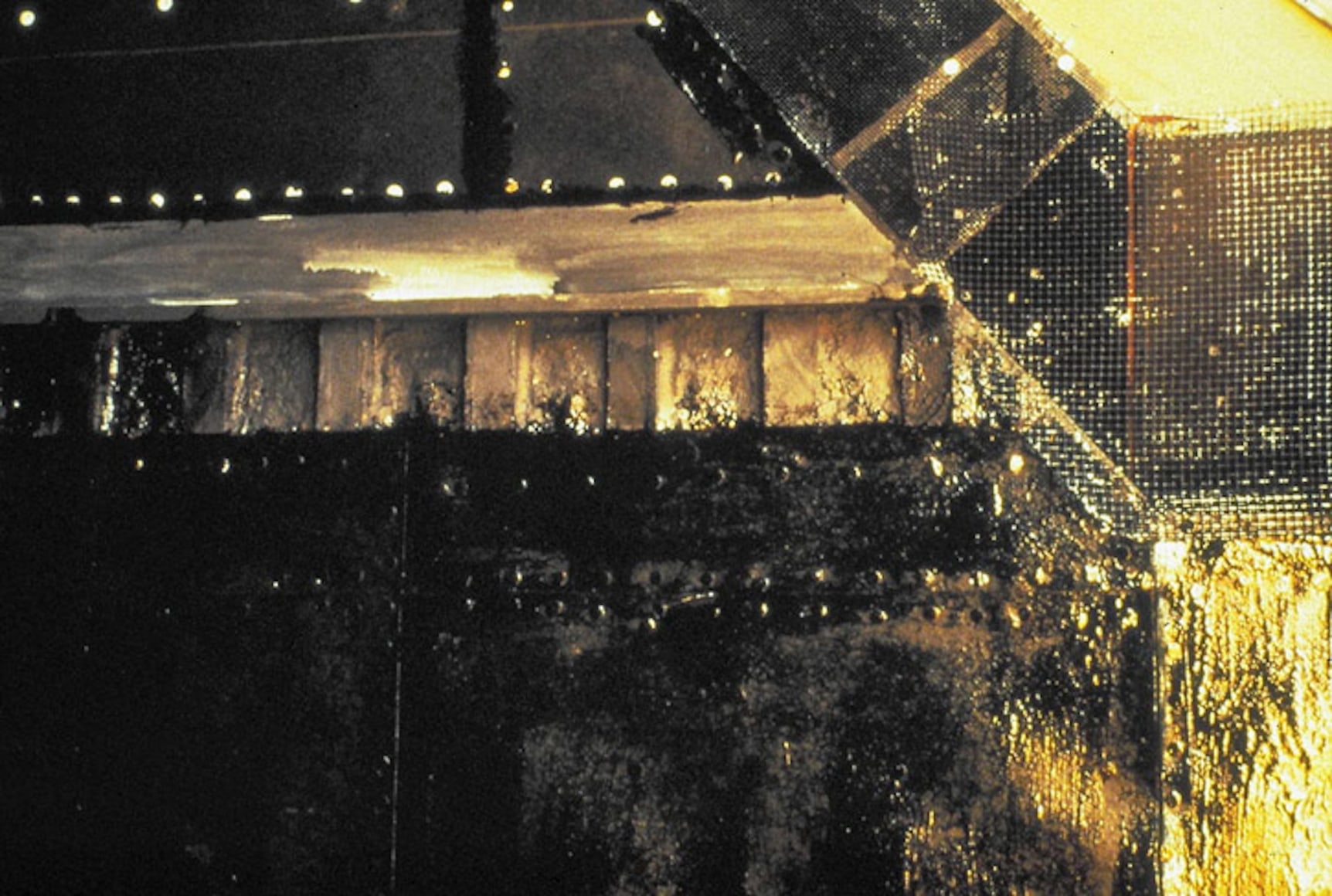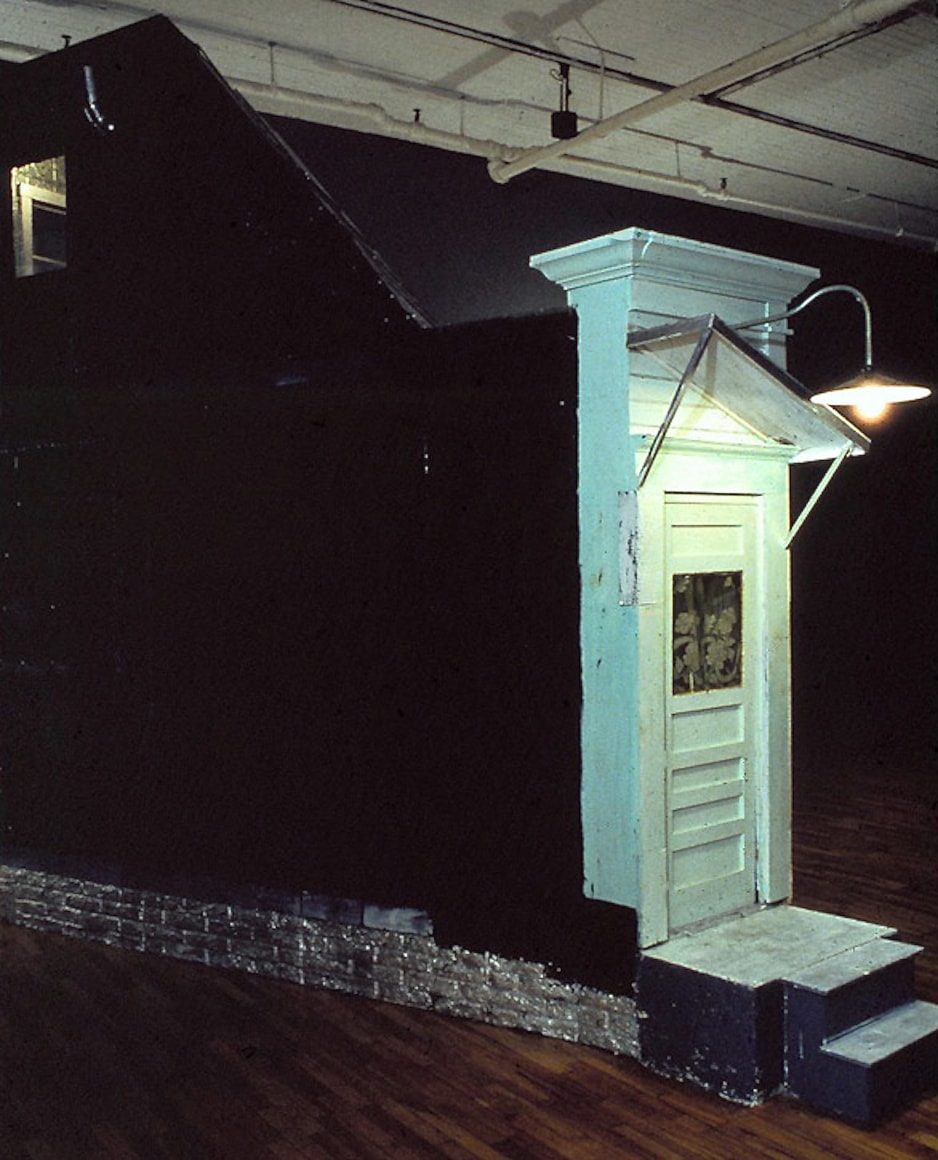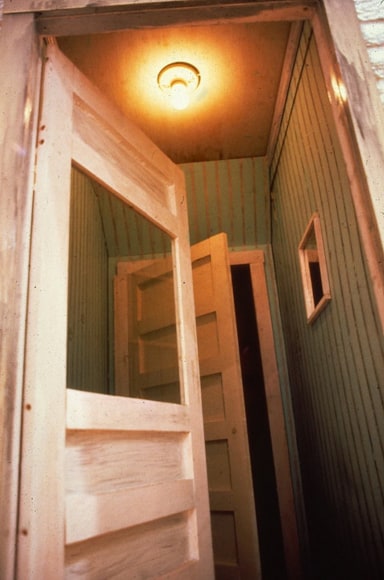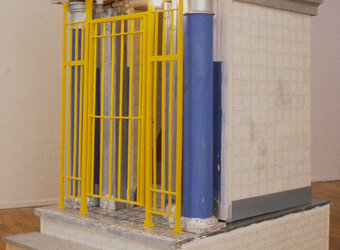
In the summer of 1982, while teaching at the Skowhegan School of Painting and Sculpture in central Maine, I was drawn to a covered stairway that went up the side of a two-story frame building in downtown Skowhegan. What attracted me was the windowed landing at the top and the oddly-slanted roof made of pieced-together metal sheeting. I imagined the stairs standing alone as a self-sufficient, eccentrically-shaped sliver of a building. Removed from its original function as an escape route or private entrance, the stairway became the vehicle for an exploration of many emotionally powerful experiences I had that summer.
One night, I spent hours watching a complete eclipse of the moon; on other nights, Northern Lights would spread across the stars. Skowhegan Stairway became my escape route, my private entrance to the heavens—a kind of telescope or viewing platform like the stairways I’d seen in pictures at Jaipur, India. One side became bright, reflective silver brick and the other side, sealed up when the building was removed, a black and tarry scar. The Earth passes between the Sun and the Moon, and for a moment, the bright face of the Moon grows dark and cold. The stairway, removed from the building, learns to stand on its own, its purpose and focus changed.

